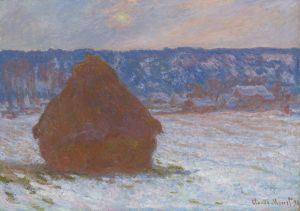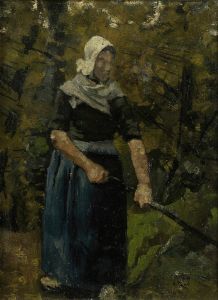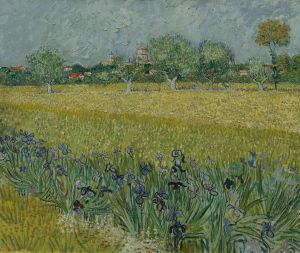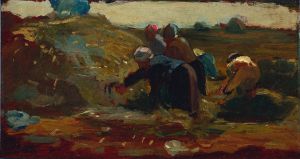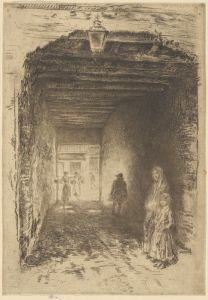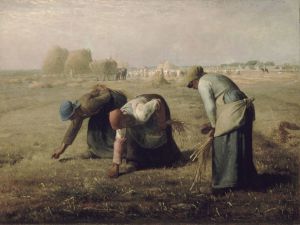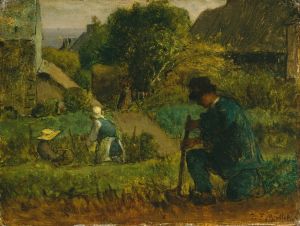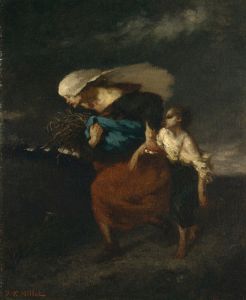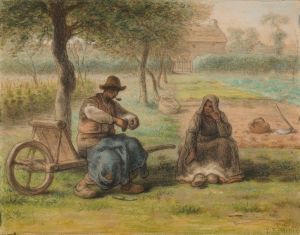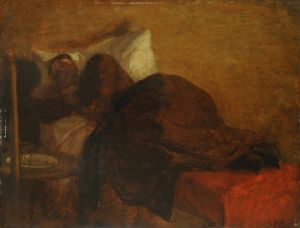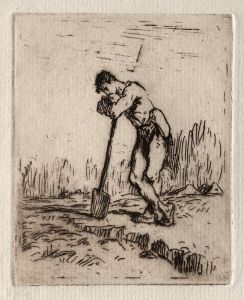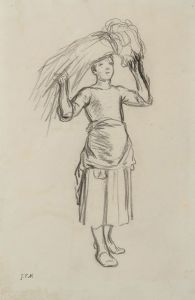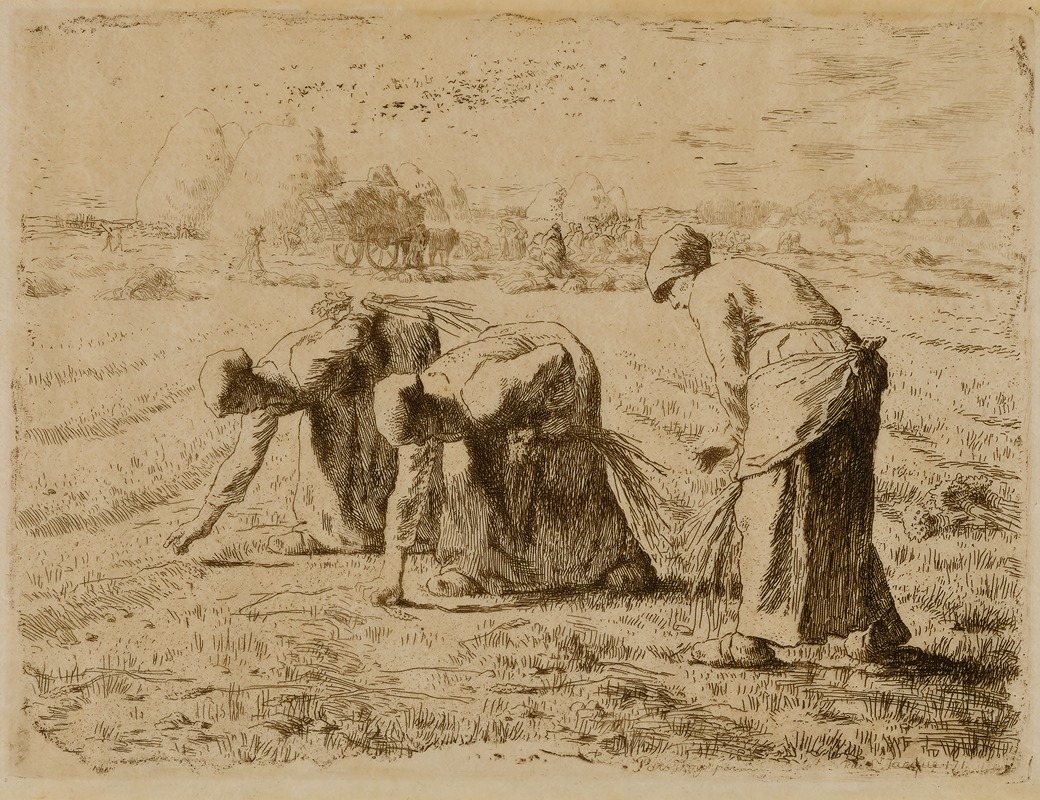
The Gleaners
A hand-painted replica of Jean-François Millet’s masterpiece The Gleaners, meticulously crafted by professional artists to capture the true essence of the original. Each piece is created with museum-quality canvas and rare mineral pigments, carefully painted by experienced artists with delicate brushstrokes and rich, layered colors to perfectly recreate the texture of the original artwork. Unlike machine-printed reproductions, this hand-painted version brings the painting to life, infused with the artist’s emotions and skill in every stroke. Whether for personal collection or home decoration, it instantly elevates the artistic atmosphere of any space.
"The Gleaners" is an iconic painting by the French artist Jean-François Millet, completed in 1857. This oil on canvas work is one of Millet's most famous pieces and is celebrated for its depiction of rural life and the dignity of labor. The painting is housed in the Musée d'Orsay in Paris, France.
Jean-François Millet was a prominent figure in the Realism art movement, which emerged in France in the mid-19th century. Realism focused on representing everyday subjects and situations in a naturalistic manner, often highlighting the lives of ordinary people. Millet, in particular, was known for his focus on peasant life and rural scenes, which is evident in "The Gleaners."
"The Gleaners" portrays three peasant women gleaning a field of stray stalks of wheat after the harvest. Gleaning was a common practice among rural poor in the 19th century, where they would collect leftover crops from farmers' fields after the main harvest. This activity was often a crucial means of subsistence for impoverished rural communities.
In the painting, the three women are bent over, laboriously picking up the remnants of the harvest. Their figures are set against a vast, open landscape under a wide sky, with a distant view of haystacks and workers loading grain onto a cart. The composition emphasizes the physical effort involved in gleaning, with the women's postures suggesting both the backbreaking nature of their work and their resilience.
Millet's use of color and light in "The Gleaners" is notable. The warm, earthy tones of the field and the soft, diffused light create a serene yet poignant atmosphere. The artist's attention to detail in the women's clothing and the texture of the field adds to the realism of the scene.
Upon its exhibition at the Salon of 1857, "The Gleaners" received mixed reactions. While some praised Millet's technical skill and the painting's honest portrayal of rural life, others criticized it for its focus on poverty and the lower classes, which was considered a controversial subject at the time. The painting's depiction of peasant women engaged in manual labor was seen by some as a political statement, reflecting the social tensions and class struggles of the period.
Despite the initial controversy, "The Gleaners" has since become a celebrated masterpiece of 19th-century art. It is often interpreted as a tribute to the dignity and endurance of the rural poor, capturing the harsh realities of their lives with empathy and respect. The painting continues to be studied and admired for its artistic merit and its social commentary.
Millet's work, including "The Gleaners," had a significant influence on later artists, particularly those associated with the Barbizon School and the Impressionist movement. His focus on rural subjects and his ability to convey the humanity of his figures have left a lasting legacy in the art world.





